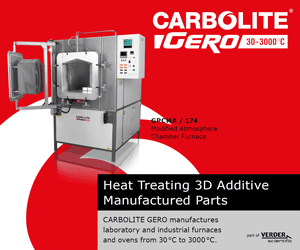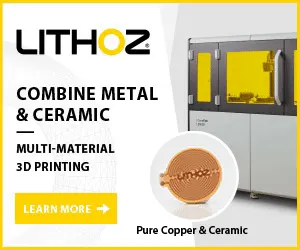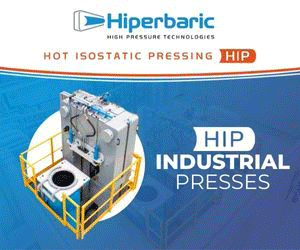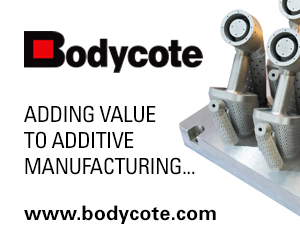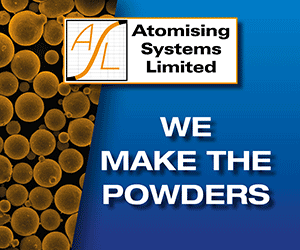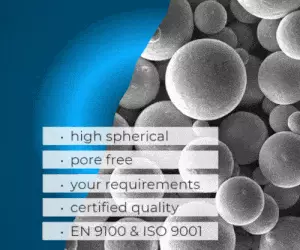Metal Additive Manufacturing, Vol. 7 No. 2 Summer 2021
Prefer a PDF download? Click here
In addition to the latest industry news, this 204-page issue of Metal Additive Manufacturing magazine includes the following exclusive features:
Optimised thermal management in semiconductor fabrication using AI-enabled generative design and Additive Manufacturing
An unexpected consequence of the COVID-19 pandemic has been its impact on the multibillion dollar semiconductor microchip market: at the very same moment as demand for consumer electronics skyrocketed due to global lockdowns, the supply of semiconductors was bottlenecked by production disruptions. Now, supply chain shortages threaten the production volume of the industries dependent on these parts.
Scott Green and Niels Holmstock, 3D Systems, and Lieven Vervecken and Gert-Jan Paulus, Diabatix, explore how metal AM can be used to increase efficiency in semiconductor fabrication and boost the speed at which these vital components can be produced.
View online | Download single page PDF | Download double page PDF
Forging a process for mass customisation via metal Additive Manufacturing
Metal Additive Manufacturing technologies offer the potential for true mass customisation, but in order to leverage this opportunity, new, complex workflows and business models have to be implemented.
In this article, Siemens Digital Industries Software’s Ashley Eckhoff considers the challenges when addressing the topic, from the addition of further complexity, to an already challenging Additive Manufacturing workflow, to traceability and regulation. By adapting the AM process to meet these needs, companies can reap the benefits of new markets uniquely suited to this technology.
View online | Download single page PDF | Download double page PDF
Bringing it all together:
How Materialise is integrating manufacturing and software expertise to shape AM’s future
In an industry that sees a constant influx of new players hoping to forge a place for themselves in a brave new manufacturing landscape, there are only a few companies which have been on the AM scene since its earliest days, whilst remaining at the top of their game. One of these is Materialise, an AM company that has benefitted from leveraging its dual specialisms of AM parts production and AM software development.
Metal AM magazine’s Emily-Jo Hopson-VandenBos talked to Materialise’s Ingo Uckelmann and reports how, now more than ever, the bringing together of manufacturing and software expertise is the future for AM.
View online | Download single page PDF | Download double page PDF
Pedal to the metal at the Digital Manufacturing Centre: Redefining what’s possible for AM in hypercars and beyond
This summer, a new player arrived on the AM scene: the Digital Manufacturing Centre, or DMC. Based on the edge of Silverstone, the UK’s most famous race circuit, home to numerous leading F1 teams, there could be no better place to launch a business aimed at offering AM support to the elite in performance motorsport.
Jim Hadfield speaks with the DMC’s CEO, Kieron Salter, to explore how metal Additive Manufacturing is enabling innovation in the booming hypercar industry, and how a truly connected digital manufacturing operation can bring the DMC a competitive advantage in this field and more.
View online | Download single page PDF | Download double page PDF
The future is Additive Manufacturing – if we take a more holistic view of the design opportunities
The uptake of Additive Manufacturing by industry, believes Autodesk’s Paul Sohi, has been both stratospherically high and confusingly low. In explaining and addressing this dichotomy, Sohi explores the multiple potentials of AM when approached by taking a more holistic view of design challenges.
Whilst there is no doubt that the popularisation of AM technology is influencing how we design products by shifting the design language to embrace more complex or nonstandard forms, Sohi believes that this is where the application of AM seems to be stagnating. So, how can we close the loop from design to manufacturing?
View online | Download single page PDF | Download double page PDF
Building a case for radical collaboration plus quality standards: The pathway to growing the AM industry
While the acceleration of metal Additive Manufacturing adoption is seen as inevitable, thanks to its advantages over conventional manufacturing processes for high-complexity, customised or on-demand parts, Sigma Labs CEO Mark Ruport believes that ‘radical collaboration’ is required for AM to reach its true potential.
In this article, Ruport discusses how the company is targeting radical collaboration and the implementation of cohesive quality standards across the value chain to grow AM and overcome the challenges posed by true industrialisation.
View online | Download single page PDF | Download double page PDF
Distributed manufacturing: Old concept, new relevance, new technology?
In highlighting the vulnerabilities of global supply chains, events such as COVID-19 have inspired renewed interest in alternative forms of organising production. Distributed manufacturing is now seeing early use in fields such as oil and gas and for on-demand spare parts manufacturing. For the first time, large-scale on-demand manufacturing was seen in the supply of emergency PPE at the height of the pandemic.
Dr Jennifer Johns discusses how AM can help to address the challenges this new business model presents, and introduces the University of Bristol’s £1 million Brokering Additive Manufacturing project, which seeks to produce a revolutionary new brokering method for highly distributed and diverse manufacturing systems.
View online | Download single page PDF | Download double page PDF
Design for Additive Manufacturing:
A workflow for a metal AM heat exchanger using nTopology
Heat exchangers have become – excuse the pun – a hot topic in metal Additive Manufacturing. This is an application that can, in one go, leverage advances in equation-driven CAD design software and the capabilities of AM to produce geometries that would be impossible by any other manufacturing process.
Olaf Diegel , Wohlers Associates, reports on a project exploring workflows for AM heat exchanger design using design tools from nTopology.
View online | Download single page PDF | Download double page PDF
Taking the holistic view:
Defining the state-of-the-art in the evolving PBF-LB machine marketplace
In a rapidly evolving Additive Manufacturing landscape, choosing a machine for the production of parts by Laser Beam Powder Bed Fusion (PBF-LB) is now about far more than a cost per part calculation.
In this article, Sebastian Becker, EOS GmbH, considers how a host of additional factors now need to be considered when exploring the AM machine marketplace, from the specifics of a machine’s operation to software, IP protection and beyond.
View online | Download single page PDF | Download double page PDF






